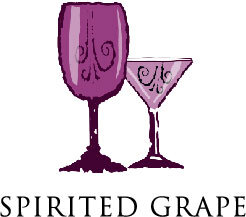Italy's Sparkling Wines: Dual Personalities (Part 1)
/Spending New Year’s Eve in Rome enables the observation and enjoyment of Italy’s dual personality in sparkling wine. Prosecco was sold by street vendors and enjoyed alfresco; sitting on the Spanish Steps, watching fireworks in Piazza del Popolo or while enjoying the concert at Circus Maximus. Franciacorta was being poured inside Rome’s many Enotecas and Ristorantes.
While both Prosecco and Franciacorta are sparkling wines, there are more differences than just where they are enjoyed.
Prosecco
Prosecco is often considered cheap, easy to drink, perfect during happy hour and generally a wine for every occasion.
History and geography
Prosecco has been produced in northeastern Italy going back as far as Roman times using the Glera grape which grew near the village of Prosecco.
Cultivation spread to the hills of Veneto and Friuli-Venezia Giulia in the 18th century and there is early documentation that due to Prosecco’s aromatic quality it is suitable for producing wine with a fine sensory profile.
Production continued to spread to the lower lying areas of Veneto and Friuli-Venezia Giulia and this is where the Prosecco we know today was first produced in the beginning of the 20th century, thanks to the introduction of a new secondary fermentation technique.
Scientific knowledge has come leaps and bounds later in the 20th century, which perfected the Prosecco production method.
Prosecco first received Denominazione di Origine Controllata (DOC) status in 1969 for sparkling wines produced in the hills near the towns of Conegliano and Valdobbiadene.
In 2009 major changes to Prosecco were implemented:
Prosecco is no longer considered a wine, but defined as a wine-producing region. One of the biggest changes is the grape is now correctly identified as Glera.
Prosecco DOC was expanded to replace the previous Indicazione Geografica Tipica (IGT) region in northeastern Italy. Prosecco DOC encompasses nine provinces in the regions of Veneto and Friuli-Venezia Giulia. This introduced stricter controls and greater guarantees for the consumer.
Prosecco Superiore was elevated to Denominazione di Origine Controllata e Garantita (DOCG) status. The “classic” region is comprised of the three villages of Conegliano, Valdobbiadene and Asolo. The wines include Conegliano Valdobbiadene Prosecco DOCG and Colli Asolani (Asolo) Prosecco DOCG.
The “Crus” Rive and Cartizze are new introductions.
Il Rive is reserved for only sparkling wines, which highlight individual communes or hamlets in the Conegliano-Valdobbiadene area enabling individual expression. “Rive” in local dialect translates as “vineyards planted on steep land”.
Superiore di Cartizze is the peak of DOCG quality and is considered the “grand cru” of Prosecco. Cartizze is comprised of 107 hectares of remarkably steep vineyards of San Petro di Barbozza, Santo Stefano, and Saccol in the commune of Valdobbiadene. This micro area is a perfect combination of mild climate, aspect and soils. The vineyards here produce a sparkling wine of particular elegance which represents the maximum expression of the Conegliano-Valdobbiadene area.
Fast forward to 2020 and the announcement of Prosecco Rosé DOC
Since it was just approved in October 2020, we will not see Prosecco Rosé on the label until later in 2021.
As for the wine itself, Prosecco Rosé must be still be produced from a majority of white Glera grapes, but also will included 10 to 15 percent of the red Pinot Nero (aka Pinot Noir) variety to achieve its color—which should be “pink more or less intense, shining, and with a persistent foam,” according to the Consortium’s announcement. The final product can range “from Brut Nature to Extra Dry,” and all labels will have to state the word “Millesimato” (which essentially means “vintage”) and the vintage itself, with a requirement that at least 85 percent of the grapes must have been harvested from that year.
Grapes, production and styles
Prosecco must be made with a minimum of 85% Glera while the remaining 15% can be of any combination of Verdiso, Perera, Bianchetta, Glera Lugna, Pinot Bianco, Pinot Grigio, Chardonnay, or Pinot Nero (only if produced as a white wine).
Prosecco is made in the Charmat or “Italian Method”. Defined as the second fermentation taking place in large pressurized stainless steel tanks with the addition of sugar and yeast. This second fermentation lasts a minimum of 30 days. Once finished, the sparkling wine is bottled and ready to be released into the market. This method allows the preservation of the grapes’ varietal aromas, giving a fruity and floral wine.
Prosecco can either be produced as full sparkling (Spumante) or lightly sparkling (Frizzante or gentile). Then the specific style is designated by the residual sugar content.
Brut – maximum of 12 grams per liter of residual sugar
Extra Dry – between 12-17 grams per liter
Dry – between 17-32 grams per liter
Prosecco is low in alcohol with only 11 to 12% alcohol by volume and low in pressure with 3 atmospheres of pressure for the Spumante and 1 to 2 ½ atmospheres of pressure for the Frizzante.
Prosecco is best drunk young within 3 years of vintage as it grows stale in time. High quality Prosecco can age for up to 7 years.
Prosecco is most commonly un-mixed, but can appear in several cocktails
Bellini (Peach and Prosecco)
Spritz (Aperol, Compari, Cynar)
Sgroppino (Lemon sorbet, Prosecco and vodka)

